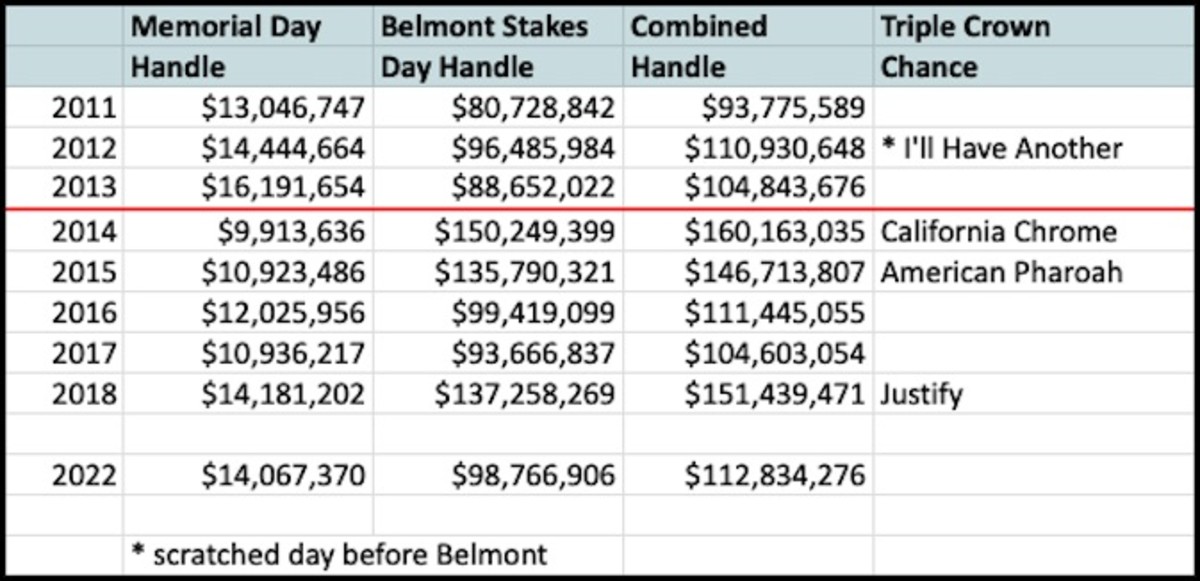While I typically find Ray's View From the Eighth Pole columns to be insightful, his most recent offering appears as though it may have been written on one of those foggy Saratoga mornings when it's difficult to see the finish line 100 feet out, let alone from an eighth of a mile.
The problem that I have with his conclusion, which is neatly summarized in the title of his piece, is that he attempts to support it through the use of highly misleading data, derived from this chart:

The simple reason that the data shown is misleading is because it is not inflation adjusted, and the extreme impact of the resulting miscalculations can be understood when considering his primary claims. First, we have this:
To their credit, NYRA has grown Memorial Day handle back to where it was in the Met Mile days, now focusing on a good day of racing to showcase New York-breds
a claim that is patently false.
The $16 million figure representing the Memorial Day handle in 2013 is actually equivalent to $20 million in 2022 inflation-adjusted dollars. So, in an apples to apples comparison, the 2022 figure ($14 million) reveals a $6 million, or ~30 percent decline in real dollars. A 30 percent decline!
This is Ray's other central claim:
Making Belmont Stakes Day as strong a day of racing as there is this side of the Breeders' Cup has helped handle, especially when a horse is going for the Triple Crown.
First, we have no idea if, or to what degree moving the Met Mile (and two other races) has impacted handle in Triple Crown editions of Belmont days. It's just not possible to judge with any confidence, as the only three which fell into that category over the past 25 years occurred after the change, and are extreme outliers.
But setting aside those special days, it is possible to accurately judge the relative handles when there were no TC contenders. I won't use 2012 data, as there was hype around I'll Have Another, even though he was scratched the day before the event. In 2013, there was ~$89 million wagered, which is equivalent to ~$112 million inflation-adjusted (2022) dollars. In 2022, the handle was ~$99 million, which means that in real dollars, there was a ~$13 million, or ~12% decline in wagering.
These two simple, yet obviously important adjustments, not only undercut Ray's claim that the move of the Met Mile “proved” to be a good business decision by NYRA, but suggest the opposite!
I will assume that Ray is correct about NYRA retaining a higher percentage of simulcast wagering on Belmont days, and ideally, that should be factored into the adjusted data. But even if it were (I have no access to the relevant details), it seems highly unlikely that it would significantly alter the basic picture.
Full disclosure: I was unhappy with the move originally, and criticized it publicly at the time. But as Daniel Patrick Moynihan famously said, 'Everyone is entitled to his own opinion, but not to his own facts.”
–Tinky
******************
If you would like to submit a letter to the editor, please write to info at paulickreport.com and include contact information where you may be reached if editorial staff have any questions.
The post Tinky: The Met Mile Rescheduling A Business Win? Not So Fast, Ray appeared first on Horse Racing News | Paulick Report.
